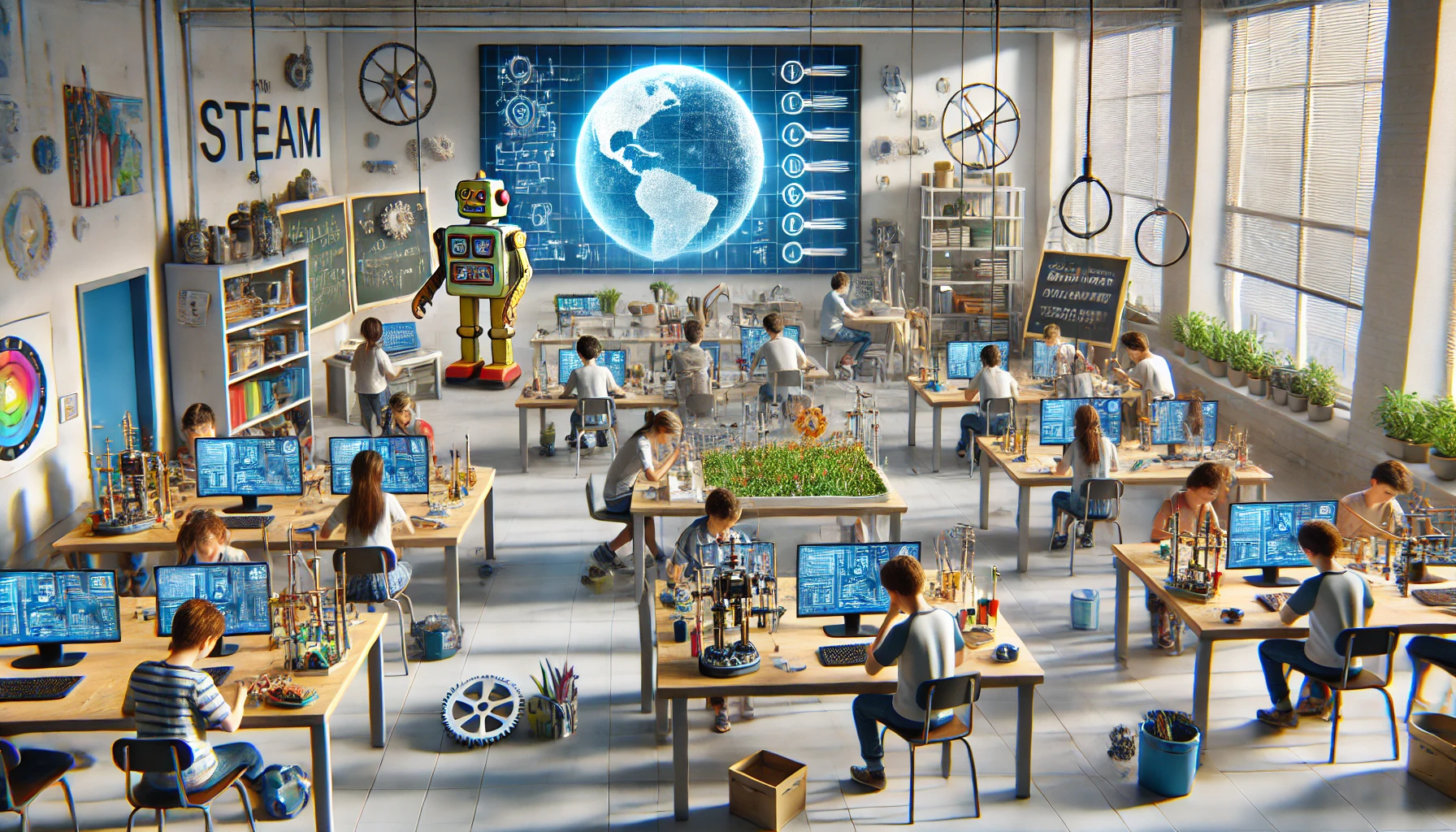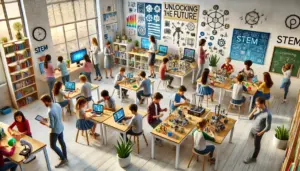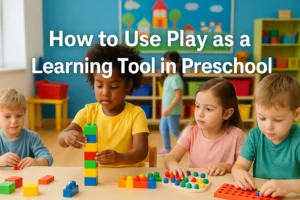In an era marked by rapid technological advancements and intricate global challenges, education systems must evolve to prepare students for future careers. STEAM education, integrating science, technology, engineering, arts, and mathematics, has emerged as a powerful approach to equip students with the skills essential for 21st-century success. By fostering creativity, critical thinking, and collaboration, STEAM education is pivotal in shaping tomorrow’s workforce.
Understanding STEAM Education
STEAM education is an interdisciplinary approach that incorporates the arts into the traditional STEM (science, technology, engineering, and mathematics) curriculum. This integration acknowledges the importance of creativity and innovation alongside technical skills, offering a more comprehensive and engaging learning experience that reflects real-world scenarios.
Fostering Creativity and Innovation
A significant benefit of STEAM education is its emphasis on creativity and innovation. Including the arts encourages students to think outside the box, explore new ideas, and devise original solutions to problems. This creative thinking is vital in many future careers where innovation drives progress and competitive advantage. For instance, engineers developing cutting-edge technology must approach problems creatively to formulate novel solutions.
Enhancing Critical Thinking Skills
STEAM education nurtures critical thinking by encouraging students to analyze information, evaluate evidence, and make informed decisions. This skill is crucial in fields like data science, cybersecurity, and healthcare, where professionals must interpret complex data and make decisions with significant consequences. By engaging in projects that require problem-solving and critical analysis, students develop the ability to think critically and independently.
Promoting Collaboration and Teamwork
Collaboration and teamwork are essential in the modern workplace. STEAM education emphasizes collaborative learning, where students work together on projects requiring diverse skill sets. This approach mirrors many professional environments where individuals from different disciplines must collaborate to achieve common goals. Through group projects and interdisciplinary activities, students learn to communicate effectively, share ideas, and respect diverse perspectives.
Preparing for Technological Advancements
As technology evolves, future careers will increasingly demand a strong foundation in STEM fields. STEAM education prepares students for this reality by integrating technology and engineering into the learning process. Students gain hands-on experience with tools and technologies like coding, robotics, and digital design, essential in many emerging industries. This technical proficiency, combined with creative and critical thinking skills, equips students for future technological advancements.
Incorporating Arts to Humanize Technology
Incorporating the arts in STEAM education adds a human element to technological and scientific pursuits. It encourages students to consider the ethical, cultural, and societal implications of their work. For example, designers and engineers must think about how their creations will impact users and communities. By fostering empathy and ethical reasoning, STEAM education ensures that future professionals are technically proficient and socially responsible.
Aligning Education with Industry Needs
STEAM education aligns closely with the needs of modern industries. Employers increasingly seek individuals who possess a blend of technical skills and creative problem-solving abilities. Fields like software development, engineering, and healthcare require professionals who can innovate and adapt to changing circumstances. By providing a comprehensive education that combines STEM and the arts, STEAM prepares students to meet the demands of these dynamic industries.
Encouraging Lifelong Learning
The fast-paced nature of technological and scientific advancements means that professionals must be lifelong learners. STEAM education instills a passion for continuous learning by encouraging curiosity and exploration. Students are taught to embrace challenges, seek out new knowledge, and remain adaptable. This mindset is crucial for future careers, where ongoing education and professional development are necessary to stay current and competitive.
Building a Diverse Workforce
Diversity in the workforce drives innovation and creativity. STEAM education promotes inclusivity by encouraging participation from underrepresented groups in STEM fields. By providing equal opportunities and fostering a welcoming environment, STEAM education helps build a diverse talent pool. This diversity brings various perspectives and ideas, essential for solving complex global challenges.
Real-World Applications of STEAM
STEAM education emphasizes real-world applications, making learning relevant and engaging. Students participate in projects that address real-world problems, such as environmental sustainability, public health, and urban planning. These projects demonstrate how integrating STEM and the arts can lead to innovative solutions with practical impacts. By working on meaningful projects, students see the value of their education and are motivated to pursue careers that make a difference.
Case Studies of STEAM Success
Several schools and educational programs have successfully implemented STEAM education, leading to impressive outcomes. For example, High Tech High in San Diego uses a project-based learning approach that integrates STEM and the arts. Students work on interdisciplinary projects addressing real-world issues, such as designing sustainable energy solutions or creating public art installations. This approach has resulted in high levels of student engagement and academic achievement.
Challenges and Opportunities in STEAM Education
While STEAM education offers many benefits, it also presents challenges. Integrating the arts into STEM curricula requires careful planning and resource allocation. Educators must be trained to deliver interdisciplinary lessons, and schools need access to appropriate materials and technology. However, these challenges also present opportunities for innovation and collaboration. By working together, educators, policymakers, and industry leaders can create a robust STEAM education framework that benefits all students.
Conclusion
The role of STEAM education in future careers is undeniable. By fostering creativity, critical thinking, collaboration, and technical proficiency, STEAM prepares students for the demands of the modern workforce. As industries evolve, integrating STEM and the arts will be essential for driving innovation and addressing global challenges. By investing in STEAM education, we can equip the next generation with the skills and knowledge needed to thrive in an ever-changing world.
FAQs
What is STEAM education?
STEAM education is an interdisciplinary approach that integrates science, technology, engineering, arts, and mathematics to provide a holistic and engaging learning experience.
Why is creativity important in STEAM education?
Creativity is important in STEAM education because it encourages students to think outside the box, explore new ideas, and develop innovative solutions to problems, essential skills for many future careers.
How does STEAM education prepare students for future careers?
STEAM education prepares students for future careers by fostering critical thinking, collaboration, technical proficiency, and a passion for lifelong learning, aligning closely with the needs of modern industries.
What role do the arts play in STEAM education?
The arts in STEAM education add a human element to technological and scientific pursuits, encouraging students to consider ethical, cultural, and societal implications, and fostering empathy and ethical reasoning.
How can schools implement STEAM education effectively?
Schools can implement STEAM education effectively by providing interdisciplinary training for educators, investing in appropriate materials and technology, and creating real-world, project-based learning opportunities.
Why is diversity important in STEAM education?
Diversity in STEAM education is important because it brings various perspectives and ideas, driving innovation and creativity, and helping solve complex global challenges.



